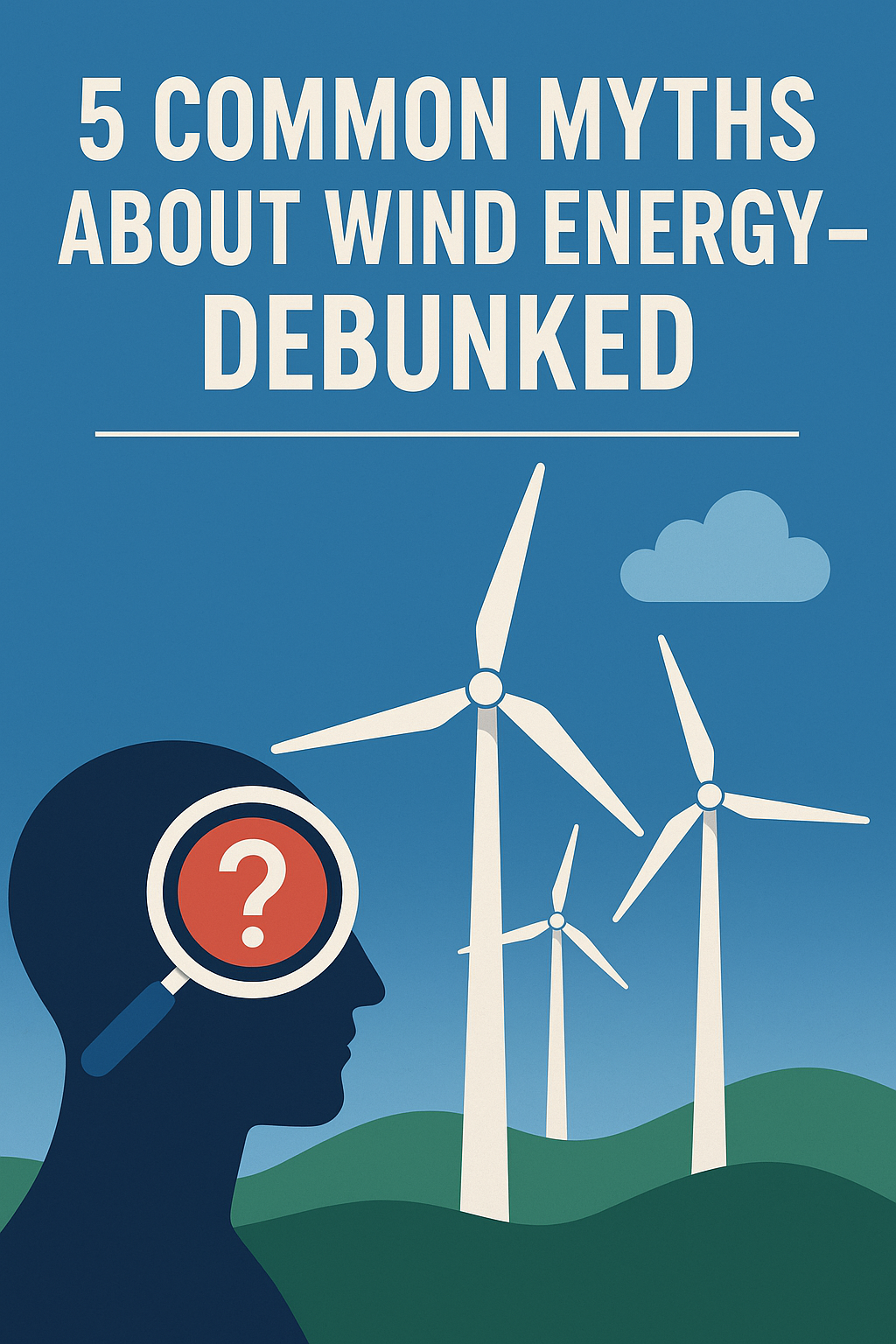
5 Common Myths About Wind Energy – Debunked
Introduction to Wind Energy and its Growing Importance
Wind energy is a major player in the renewable energy landscape, often praised for its sustainability and efficiency. But, like many innovative technologies, it comes with its own set of myths and misconceptions. In this article, we’ll tackle five common myths about wind energy, debunk them, and provide clear insights on how wind power is shaping the future of energy and sustainable living.
Myth 1: Wind Energy is Inefficient and Unreliable
Many people still believe that wind energy is unreliable, only producing power when the wind is blowing. But here's the truth: modern wind turbines are incredibly efficient, designed to generate power at varying wind speeds. Additionally, energy storage systems and grid integration technologies have made it easier to use wind energy consistently, even when the wind isn’t blowing.
How Wind Turbines Work
Wind turbines work by converting kinetic energy from the wind into electricity. With advancements in turbine design, today's turbines can generate electricity at much lower wind speeds than in the past. This means that even when the wind is light, turbines can still harness energy effectively.
Myth 2: Wind Turbines are Too Expensive
It’s a common misconception that wind turbines are prohibitively expensive. While there’s an initial investment involved in setting up wind farms or installing residential wind turbines, the long-term savings and environmental benefits far outweigh the upfront costs. As technology advances, the cost of wind energy has decreased significantly, making it an affordable choice for homeowners and businesses alike.
Long-Term Benefits of Wind Energy
In the long run, wind energy can save you money on energy bills. Plus, with incentives like tax rebates and grants available in many countries, the initial investment becomes much more manageable. Think of it as a long-term investment in both your wallet and the planet.
Myth 3: Wind Energy is Harmful to Wildlife
Another myth that often circulates is that wind turbines pose a serious threat to wildlife, particularly birds and bats. While it’s true that some bird species have been affected by wind turbines, studies have shown that the impact is minimal compared to other causes of wildlife fatalities, such as collisions with buildings, cars, and power lines.
Minimizing Wildlife Impact
In fact, wind energy is one of the least harmful energy sources when it comes to wildlife. Additionally, ongoing research and technological improvements are being made to minimize risks to wildlife, such as advanced turbine design and careful site placement to avoid migratory paths.
Myth 4: Wind Energy is Only Suitable for Remote Locations
Some people believe that wind energy can only be harnessed in remote, rural locations. While it's true that wind farms are often located in rural areas with open space, residential wind turbines are becoming increasingly popular in urban and suburban settings. With the right equipment, even homes in urban areas can benefit from wind energy.
Urban Wind Energy Solutions
Smaller residential wind turbines are designed specifically for homes in urban and suburban settings. They can be installed on rooftops or in backyards, and they work well in areas with moderate wind speeds. Combining wind and solar energy is also a great way to maximize your home's energy efficiency and sustainability.
Myth 5: Wind Power Cannot Replace Fossil Fuels
One of the biggest myths about wind energy is that it can never fully replace fossil fuels. While it's true that wind energy, along with other renewable sources like solar, cannot currently supply all of our energy needs on its own, it can play a crucial role in reducing our reliance on fossil fuels. With continued advancements in renewable energy storage and grid systems, wind power is set to become an even more significant part of the energy mix.
The Future of Wind Energy and Sustainability
Wind energy, in combination with solar power and other renewable sources, is already helping to reduce carbon emissions and combat climate change. As technologies improve and more efficient storage systems are developed, wind energy will play an even bigger role in the sustainable future we all strive for.
Conclusion: The Truth About Wind Energy
Wind energy is one of the most promising renewable energy sources available today, offering numerous benefits for sustainable living. By debunking these common myths, we can better understand the true potential of wind power and how it can contribute to a greener, more sustainable world. Whether you’re interested in residential wind energy, or simply looking to reduce your carbon footprint, wind power is an excellent choice for the future.
FAQs
1. What is the efficiency of wind turbines?
Modern wind turbines are highly efficient, capable of generating electricity at varying wind speeds. They can generate energy even when the wind is light, thanks to improved turbine designs and advanced energy storage systems.
2. Are wind turbines harmful to the environment?
Wind energy is one of the least harmful energy sources for the environment. While some wildlife may be affected by wind turbines, the overall impact is minimal compared to other energy sources like fossil fuels or nuclear power.
3. Can I install a wind turbine at home?
Yes, you can install a small residential wind turbine at your home, especially if you live in an area with moderate wind speeds. Urban wind turbines are also available, designed to fit smaller spaces such as rooftops and backyards.
4. How much does a wind turbine cost?
The cost of a wind turbine can vary depending on its size and the specific setup. However, over time, the savings on energy bills and the environmental benefits make it a worthwhile investment for many homeowners.
5. How does wind energy contribute to fighting climate change?
Wind energy is a clean, renewable source of power that helps reduce greenhouse gas emissions. By replacing fossil fuels with wind power, we can significantly cut down on carbon emissions and reduce our reliance on non-renewable resources.